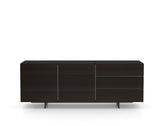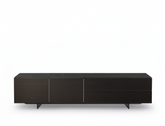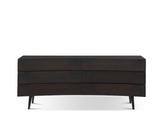Choosing the Perfect Furniture Material for Your Home
Frequently Asked Questions
1. What are the main types of furniture materials?
2. What are the advantages of using hardwood for furniture?
3. How can I determine the best furniture materials for my lifestyle?
4. What is the trend towards eco-friendly furniture materials?
5. Should I test furniture materials before making a purchase?
When it comes to furnishing your home, selecting the right materials is crucial for both aesthetics and functionality. With a plethora of options available, it can be overwhelming to make the right choice. This guide will help you navigate the landscape of furniture materials, so you can enhance your living space with style and durability.
Understanding Different Types of Furniture Materials
Furniture materials can broadly be categorised into several types, each with its own unique characteristics. Understanding these categories will enable you to make informed decisions based on your lifestyle, the intended use of the furniture, and your aesthetic preferences.
Wood
Wood is a classic choice for furniture, offering timeless beauty and durability. It can range from solid hardwoods like oak and walnut to softer options like pine. The choice of wood will significantly influence the style and longevity of your furnishings.
- Hardwood: Known for its durability, hardwoods are less susceptible to wear and tear. They are ideal for high-use items like dining chairs.
- Softwood: Generally lighter and less expensive, softwoods are better for less-used furniture but require more care.
- Engineered Wood: Materials like MDF and plywood are cost-effective and often used in modern designs. They can mimic the look of solid wood while offering a more budget-friendly alternative.
Metal
Metal furniture is becoming increasingly popular for both modern and industrial styles. Materials like stainless steel, aluminium, and wrought iron can give your space a contemporary edge while providing excellent durability.
- Stainless Steel: Resistant to rust and corrosion, stainless steel is perfect for outdoor furniture or modern indoor pieces.
- Aluminium: Lightweight and versatile, aluminium is a great option for folding chairs and outdoor dining sets.
- Wrought Iron: Known for its ornate designs, wrought iron furniture works well in traditional and vintage settings.
Fabric and Upholstery
Fabric is an essential consideration, especially for upholstered furniture like sofas and armchairs. The right fabric can enhance comfort and add character to the piece.
- Natural Fabrics: Materials such as cotton, linen, or wool provide a soft touch and can be more environmentally friendly.
- Synthetic Fabrics: Options like polyester or nylon are typically more durable and stain-resistant, making them suitable for high-traffic areas.
- Leather: Leather offers luxury and durability. It’s easy to clean and can add a sophisticated touch to any room.
Factors to Consider When Choosing Furniture Materials
It’s essential to weigh various factors when determining which materials will best suit your home. Here are some key considerations to guide your decision-making process.
Durability
Durability is perhaps the most critical factor to consider. Different materials have different lifespans and resistance to wear and tear. For instance, if you have young children or pets, opting for materials that can withstand spills and scratches is advisable. A Designer Dining Armchair, for instance, would require sturdy materials that are easy to clean, making leather or tightly woven fabrics ideal options.
Maintenance
Consider the time and effort you’re willing to put into maintaining your furniture. Some materials require regular upkeep to look their best. For example, wood often needs polishing, while leather may require conditioning to keep it supple. On the other hand, synthetic fabrics might only require a simple wipe-down to eliminate stains.
Style and Aesthetics
The style of your furniture should reflect your personal taste and complement your existing décor. Consider how different materials will contribute to the overall atmosphere of your spaces. A sleek metal frame might offer an industrial feel, while richly stained wood could lend a sense of warmth and elegance. Balancing aesthetics with practicality is crucial.
Budget
Your budget plays a significant role in material selection. While solid wood or high-quality leather may come with a higher price tag, they often provide better longevity and value for money. Evaluate what you’re willing to spend and look for materials that offer the best balance between cost and quality.
Knowing Your Lifestyle
Family and Pets
Your family dynamics and pet situations can significantly influence the materials you choose. If you have a busy household, consider furniture that can withstand daily wear and tear. For example, selecting dining chairs upholstered in durable, stain-resistant fabrics can save you time and cost on future replacements.
Outdoor vs Indoor Furniture
If you’re shopping for outdoor furniture, materials like weather-resistant metal and synthetic wicker are excellent choices. Indoor furniture, however, might require a softer touch. Prioritising materials based on their intended location can enhance both the functionality and appearance of your furnishings.
Trends in Furniture Materials
Staying updated on current trends can provide inspiration when selecting furniture materials.
Eco-Friendly Materials
As consumers become more eco-conscious, there’s a growing trend towards using reclaimed wood and sustainable fabrics. From bamboo to ethically sourced leather, eco-friendly materials not only reduce environmental impact but also add uniqueness and character to your home.
Mixed Materials
Another emerging trend is the use of mixed materials. Combining wood with metal or fabric, for example, can create visually striking designs that are both functional and appealing. This approach allows you to express your personality while enhancing the aesthetic value of your space.
Making Your Final Decision
After weighing all these factors, you should feel more confident about choosing the right furniture materials for your home. Keep in mind that the ultimate goal is to create a harmonious and functional space that reflects your taste.
Test Before You Buy
Whenever possible, test the materials in person. Sit on the dining chairs, feel the texture of the fabrics, and assess the weight and sturdiness of any wooden pieces. This tactile experience can significantly influence your decision-making process.
Consult with Experts
If you're unsure, don’t hesitate to consult with design experts or furniture specialists. They can provide valuable insights tailored to your specific needs, helping you make a more informed choice.
The Perfect Match Awaits You
Choosing the right furniture material is an art that enhances your home's aesthetic and practical aspects. Whether you're considering a Designer Dining Armchair for your dining room or selecting materials for your living room furniture, understanding your choices’ characteristics and implications can lead you to remarkable results. Embrace your unique style and create a space that you'll love to come home to every day!







